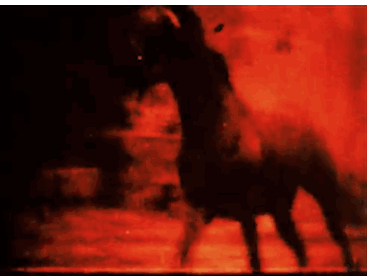
‘Born in Plymouth in 1940, Malcolm LeGrice is probably the most influential modernist filmmaker in British cinema. LeGrice’s work has explored the complex relationships between the filmmaking, projecting and viewing processes which constitute cinema as a medium, and shows an intense interest in the processes enabled by optical printers and by the combination of different types and gauges of film stock.
‘He started out as a painter in London in the early 1960s and turned to filmmaking in the middle of the decade with the Super-8 film China Tea (1965), which he followed with Castle 1 and Little Dog For Roger (both 1966), made mostly from re-worked found footage. Castle 1 can be seen as prophetic: for screenings of the film in 1968, LeGrice hung a light bulb next to the screen, flashing on and off at regular intervals and, when on, obliterating the screen image, a practice used in Martin Creed’s Turner-prize winning installation some 35 years later.
‘In the ’60s his work was informed by the radical politics of the period in opposition to the Vietnam War and US cultural imperialism, and extended to a deep hostility towards the ‘illusionism’ of Hollywood and other commercial cinemas. This tendency was particularly manifest in Spot the Microdot or How to Screw the CIA (1969), which includes found footage of GIs in battle. But LeGrice’s approach to cinema was also animated by a modernist impulse to put the central focus on the properties of the medium itself, turning them into the ‘content’ of the work. For instance, in White Field Duration (1972-73), a white screen marked only by a scratch running across clear celluloid, activates an intense perception of projection time. This film was also performed as a two-screen event and LeGrice’s installations at times extended to four or even six screens. From the late-sixties onwards, his multiple screen work was often accompanied by live performances interacting with the projection event (Horror Film 1 (1971) and Horror Film 2, (1972)).
‘LeGrice’s best and most complex work was done in the ’70s when, in the face of an intense hostility towards narrative cinema manifested by some of his avant-garde colleagues, he made a trilogy – Blackbird Descending (1977), Emily (1978), and Finnegans Chin (1981) – which elaborated a critical kind of storytelling in which both the formal aspects of cinema and the very structures of narrative are explored in relation to each other: The films are set in the film-maker’s own domestic environment and achieve a combination of intellectual and aesthetic intensity rarely seen in any kind of British cinema. LeGrice also engaged with art history (After Manet (1975), After Leonardo (1973)) and with the pioneers of cinema (After Lumière (1974) and Berlin Horse (1970) – in which he included a re-filmed Hepworth film of 1900, The Burning Barn).
‘In addition to being a prolific filmmaker, LeGrice played an influential role in the critical and institutional promotion of avant-garde cinema in Britain. He was a prominent activist in the Drury Lane Arts Lab, where he formed Filmaktion with William Raban, Annabel Nicolson, Gill Eatherley, Mike Dunford and David Crosswaite, and organised mixed-media shows. He was also a pioneer in the educational domain, initiating the trend towards establishing filmmaking sections in art colleges, a policy that bore fruit in the 1980s as new generations of filmmakers emerged from these courses. He is also an inveterate polemicist: his book, Abstract Film and Beyond, provides both a historical and a philosophical context for the British and European avant-garde cinemas, and he has contributed regularly to the journal Studio International.
‘LeGrice carried out the first experiments with computer-based film making in Britain (Your Lips 1 (1970)), and though it was a preoccupation that he laid aside after 1971, it came to dominate his media practice (along with research into digital art) from the 1980s onwards. Since 1997 he has headed the media research programme at Central St Martin’s art college in London, accompanying his activities with critical-historical reflections.’ — Paul Willemen
____
Stills
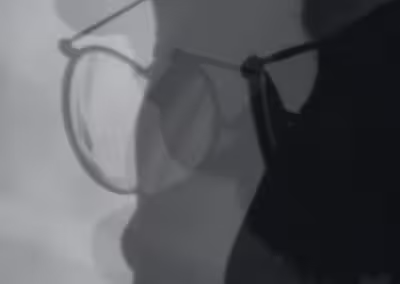
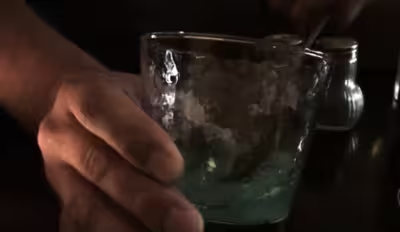
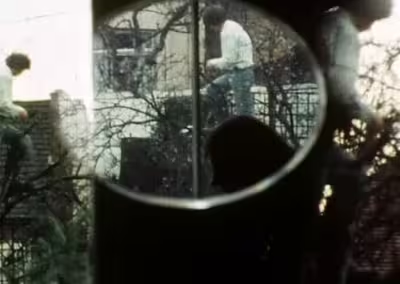

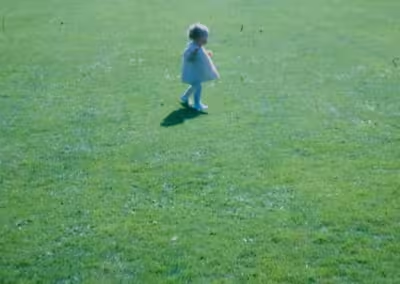

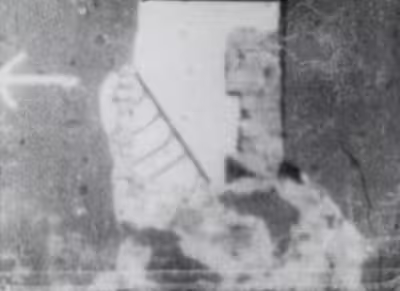
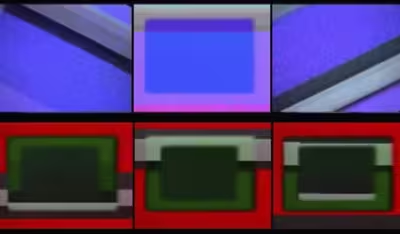
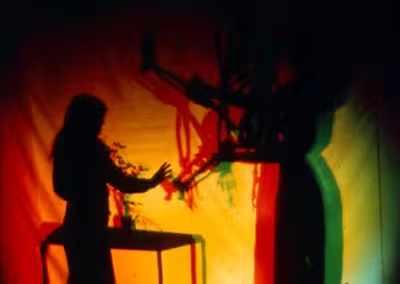



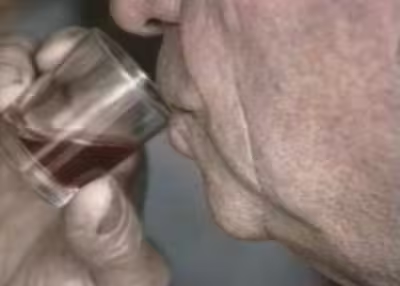
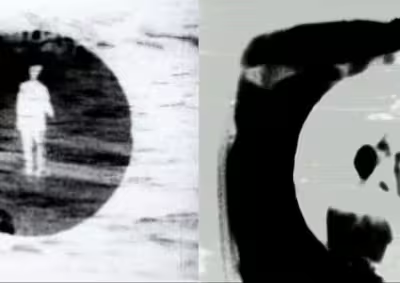
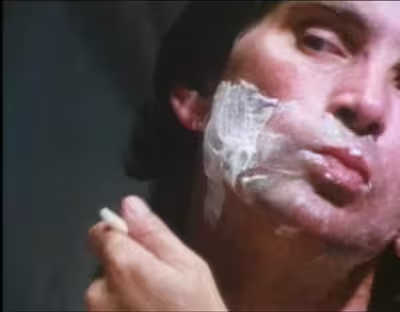


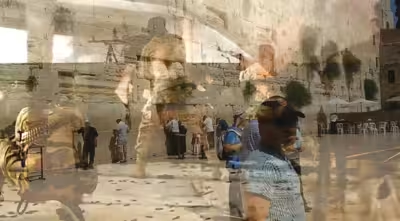

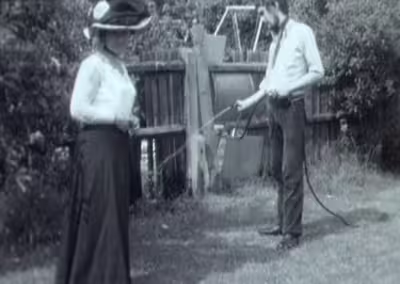



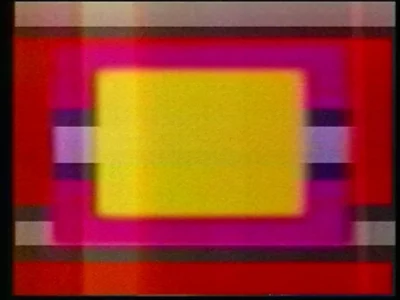
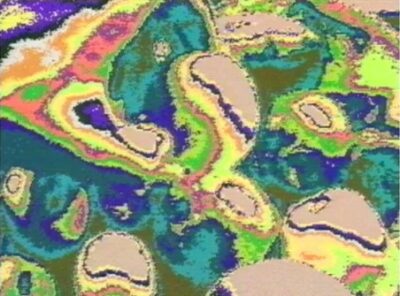
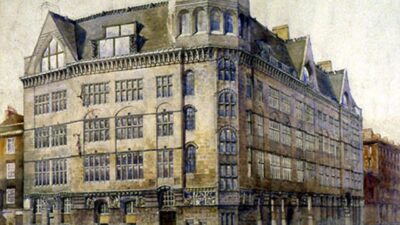
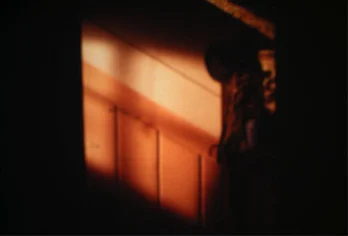
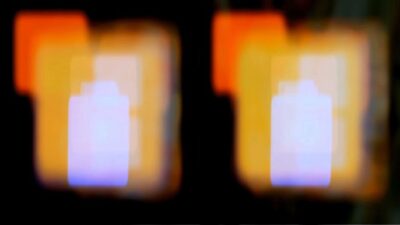
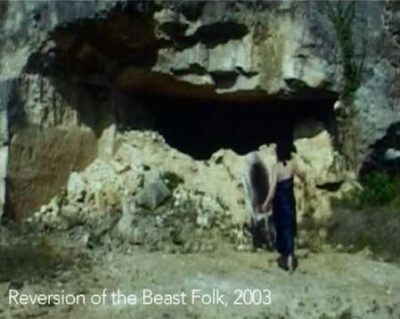
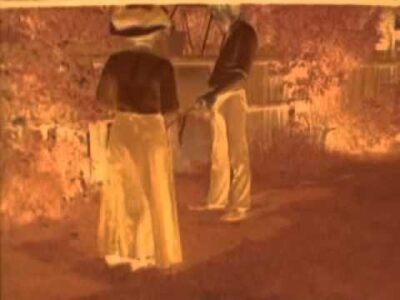
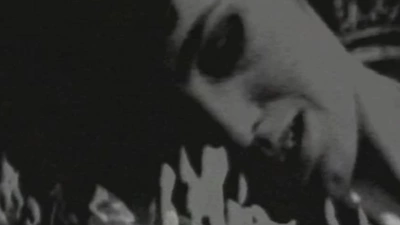
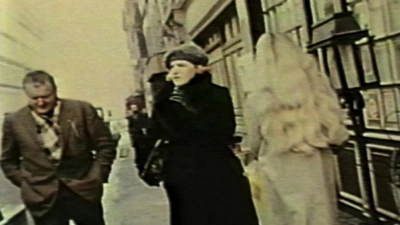
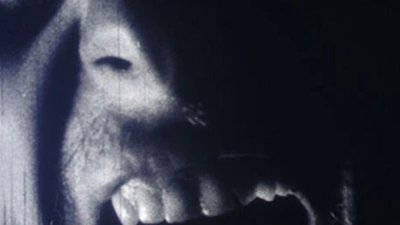



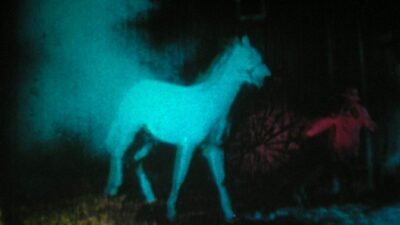


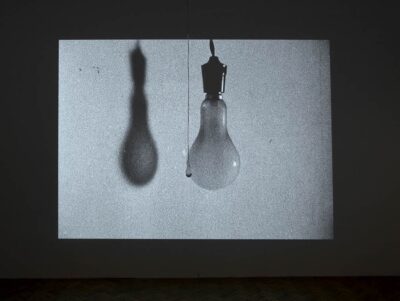
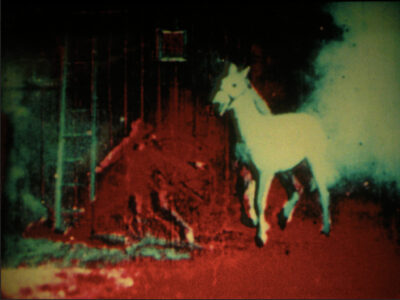


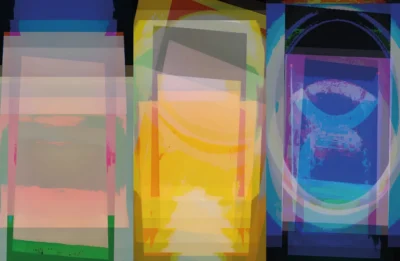
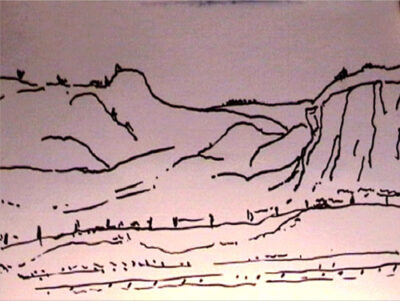

______
Further
Malcolm Le Grice Site
MLG @ Lightcone
MLG @ Richard Saltoun Gallery
Malcolm Le Grice: In the Cinema
Multi Screen Improvisation Performed by Malcolm Le Grice and Keith Rowe
Malcolm Le Grice: Present Moments and Passing Time
MALCOLM LE GRICE’S ‘BERLIN HORSE’ @ desistfilm
MLG @IMDb
Muybridgean Motion/Materialist Film: Malcolm Le Grice’s Berlin Horse
“Discourse” versus “Medium”. Interview with Malcolm Le Grice
Beyond Abstract Film, on Malcolm Le Grice
MLG’s books @ goodreads
DVD: Afterimages 1: Malcolm Le Grice Volume 1
‘Abstract Film and Beyond’, by Malcolm Le Grice
After Le Grice: on inciting a new culture and infiltrating institutions
Malcolm Le Grice @ letterboxd
MLG @ MUBI
An Analysis of the Soundtrack in the Work of Malcolm Le Grice
_____
Extras
Malcolm Le Grice vodcast in which he talks about his influences and practice.
Malcolm Le Grice February 11, 2019, LA Filmforum
Time Lapse: Malcolm Le Grice Exhibition install at Peninsula Arts
Keith Rowe & Malcolm Le Grice at KYTN 08
_____
Interview
from VELARDE

Where did the interest in film begin?
When I was around 13 or 14, I think someone must have brought in a nine millimetre camera and sold it to my father as scrap. He liked playing around with things and every Friday, he’d send me to a local shop that rented out copies of old Hollywood movies. We’d have big family gatherings and I did all the film shows for them. I got very involved in the projection. I liked to improvise.
With Popeye the Sailor, I’d play the film backwards so as he was holding the can the spinach went in rather than out and the muscle in his arm went down rather than up. My uncles and aunts all sat around watching because there was no TV, of course. They loved it.
I think my concern with time first started when I was projecting for my family. It’s one of the things about film, it can put a microscope on the time. It’s a microscope because it’s not how you see normally.
The big influence, though, was being in a jazz band when I left secondary school. I got very taken with the improvisation and performance.
It was fortunate that when I got to Plymouth Art College, Mike Westbrook, who was a fellow student and a brilliant musician, was also there. He played trumpet and piano and formed his own Ellington-type band. We played every Saturday night at a big hall in Plymouth. I also toured around the west of England with a traditional jazz band.
The Arts Lab on Drury Lane was founded in 1967 and quickly became a centre for London’s counter culture and alternative arts scene. When was your first contact with that scene?
The Arts Lab was the centre of counterculture in London. There was a new spirit in the air and an openness to experimentation. Everything was up for grabs. It was all about free rein creativity and getting involved. Learn and do as a collective rather than as individuals.
There was a big politicised counterculture in London. I was genuinely interested in socialism. I read Marx properly and called myself a Marxist, which I wasn’t quite, but pretty much.
I was teaching at Saint Martins. The design department did animation and owned a 16 millimetre camera. I started to encourage my students, people like Roger Ackling, to make films but they were all very primitive.
I got an invitation to see the student films at the London School of Cinema in Covent Garden. Afterwards, I walked out at the same time as David Curtis, who had been a student with me at the Slade. He said, ‘What did you think of that?’ I said, ‘I thought it was all a load of dreadful garbage.’ He agreed.
I told him I’d been making some films that weren’t like that at all. He had just got back from New York and had started a program of screenings at the Art Lab. He invited me down to see one of the programs. I took my film ‘Castle 1’ and showed it to him.
David was the first real facilitator and documenter and he gave great encouragement. He introduced me to the “Underground” as it was then.
How aware were you of the underground filmmaking scene in New York at that time?All I knew about the New York underground was the notoriety of the bottoms film [Warhol’s ‘Taylor Mead’s Ass’, 1964]. I knew about Warhol, but I hadn’t seen any of his films.
‘Castle 1’ was most influenced by literature. It was a parallel to Kafka’s ‘The Castle’. With a Kafka narrative, you never know where you are. To be honest, Kafka was the biggest influence artistically for me at that time.
On my way into Saint Martins each day, I’d walk along Old Compton Street in Soho, which was where all the film production companies were based. Any material that they didn’t want, they just chucked in the bin. I was picking stuff out of bins and then going through it. I borrowed a projector. I only selected images that I thought had some retaining mystery to them; that didn’t embody the narrative that they were intended to hold.
How did Brian Eno come to supply the soundtrack to ‘Berlin Horse’?
I showed some films out in the East End and Brian Eno was there. One of the films, ‘Reign of the Vampire’ (1970) was all loops. I’d made a soundtrack for it by looping music with a delay pattern. Eno said he was making music with loops like mine and did I want a soundtrack for any of my films? I had already put something on ‘Berlin Horse’ but I wasn’t happy with it. He sent me a couple of tapes. It was not music made as a soundtrack, it was because he was interested in this loop structure. It’s indulgent, of course, because it wasn’t made as part of it; it just worked.
Why have you been so resistant to narrative in your filmmaking and writing?
The fundamentals of improvisation took me away from narrative. My films weren’t narratives, although they did have what I call dramatology. It mattered that you saw one thing before you saw something else. The idea of developing drama, the element of predicting what’s going to come next, is fundamental to all film. It just doesn’t have to be a story.
I very quickly jumped into a direction that applied all the really significant aspects of improvisation and the use of images before meaning. Meaning was to be structured by the person viewing, not by my choice and intention.
In the late 1960s, I made a lot of films where I was experimenting with the printer and the processor I made myself, which meant they incorporated errors. I wrote that technology had replaced language. The trace of the technology was itself a major component of the language of film. For me, the language of film was not narrative.
‘Little Dog for Roger’ (1967) is probably the most radical film of any that I’ve made. It’s a crossover of autobiographical and narrative structure, which is about incorporation of the machinery, the process as meaning, and the transformations that take place as a result of the process.
The original material was shot by my father on a 9.5mm camera. It’s of me, my brother and my mother running around with my dog on the fringes of Dartmoor. When I found it in the basement the film was a jumble of strips.
My first experiments were running a section of this film through the printer I had built. The projection was slipping, the screen was slipping and there were processing marks all over it. I decided that I was a lot more interested in the mistakes.
It follows the transformation from 9.5mm to being 16mm, which I did by putting the 9.5mm on top of an unexposed bit of 16mm under glass, dip processing it, and reworking the 16mm pieces. It’s one of the films I like the most.
I like it because of the inbuilt sentimentality of filming something. It’s like taking a selfie. Photographs are a mystery to me. They don’t have any charge at all until they’re at least 40 years old. What I’ve been doing gradually over the years is trying to recover the image in that recognisable way, so that you can now see what it was shot for by my father. The age has built itself into it.
Does anti-narrative equate to anti-emotion?
I don’t know whether that’s the case or not. I don’t think we can avoid emotion. I would certainly say I don’t manufacture it or encourage it. Emotion is a product of the way the elements of the film come together.
In most of my writing and most of my filmmaking, I’m resisting emotion. What is it? It’s an endochrinal response. I never start to work from the point of view of aiming towards a certain sort of emotional content.
______________
15 of Malcolm Le Grice’s 89 films
______________
Castle 1 (1966)
‘Castle 1 (first staged in 1966) was one of the first film-installations. It is composed of a solitary light bulb, suspended directly in front of the screen and a film containing found footage gathered from bins outside London Soho’s film labs (these were second-hand images from T.V. documentaries, thematically linked to the ‘surface’ of the industrial institution and political world). At intermittent points during the film, the light bulb is switched on, obliterating the projected image and illuminating the space around it.
‘Inspired by the writing of Franz Kafka (the title refers to Kafka’s novel Castle), and the painting/installations of Robert Rauschenberg, Castle 1 produces an alienating effect upon the audience, provoking in them an awareness of the cinema space and a feeling of distance from the projected image.’ — James Harding
Excerpt
______________
Little Dog for Roger (1967)
‘Little Dog For Roger is made from some fragments of 9.5 home movie that my father shot of my mother – myself, and a dog we had. This vaguely nostalgic material has provided an opportunity for me to play with medium of celluloid and various kinds of printing and processing devices. The qualities of film the sprockets the individual frames the deterioration of records like memories, all play an important part in the meaning of this film.’ — MLG
the entire film
______________
Berlin Horse (1970)
‘Multi-projection film Berlin Horse (1970) was based entirely on a novel but simple idea of a repeating, subtly changing film loop. The soundtrack created by Brian Eno was also implemented using a tape loop. According to the director, Berlin Horse examines how the eye works and how the minds builds up a perceptual rhythmic structure.’ — castelolx
the entire film
______________
Whitchurch Down (Duration) (1972)
‘This film is the beginning of an examination of the perceptual and conceptual structures which can be dealt with using pure colour sequences in loop forms with pictorial material. In this case the pictorial material is confined to three landscape locations, and the structure is not mathematically rigorous. Witchurch Down is an area of open common land, situated on the edge of Tavistock, Devon, which in total covers over 460 Acres. I particularly like how Le Grice’s abstraction process lends an ‘alien’ and disorienting quality to an otherwise familiar, bucolic view.’ — dovic
the entire film
______________
Horror Film (1972)
‘‘Horror Film’ (live performance with 3 x 16mm, 20’) is a performance with three film projectors. All are superimposed on each other with the projectors aimed from different angles. The superimpositions create a continually changing colour light mix. Le Grice interrupts the beam with a series of formal actions creating a complex set of coloured shadows. The intention is to build a complex visual experience out of simple and readily available aspects of the projection situation.’ — EYE
the entirety
_____________
Threshold (1972)
‘…Le Grice no longer simply uses the printer as a reflexive mechanism, but utilises the possibilities of colour-shift and permutation of imagery as the film progresses from simplicity to complexity. The initial use of pure red and green filters gives way to a broad variety of colours and the introduction of strips of coloured/celluloid which are drawn through the printer begins to build an image which becomes graphically and spatially complex – if still abstract – and which evokes the paintings of, say, Clifford Still or Morris Louis.
‘With the film’s culmination in representational, photographic imagery, one would anticipate a culminating ‘richness’ of image; yet the insistent evidence of splice bars and the loop and repetition of the short piece of found footage and the conflicting superimposition of filtered loops all reiterate the work which is necessary to decipher that cinematic image.’ — Deke Dusinberre.
the entire film
_____________
After Leonardo (1972)
‘Based on a cracked and deteriorating black and white detail reproduction of the Mona Lisa, it began as a six projector 16mm film performance, Over the years it has been developed into a variety of multi-video installations and performances. Many of these have involved sound improvisations by Keith Rowe and live recording a projection by Le Grice. The work continues to develop.’ — MLG
Excerpt
____________
Gross Fog (1973)
‘Using six to eight projectors edge fogged loops form a coloured film waterfall accompanied by the sound of falling water.’ — MLG
Short documentation
_____________
After Lumiere – L’Arroseur Arrose (1974)
‘Though shot in 1974 before After Manet, its conception post-dated all the preparatory work for that film. It handles in a single screen way a similar area of problematic relying more evidently on speculation by the audience of the ‘out of shot’ state of affairs, and on the expected development of the work. Like the Manet film, it is based loosely on another work, in this case adding a character who does not feature in the Lumiere film. Both works are concerned with cinematic procedures and with the audience procedure in structuring the material.’ — MLG
the entire film
_________
Weir (1993)
‘An encounter with a small man-made waterfall – firstly seen as a sculptural form then in ultra close-up and slow motion of the movement of falling water.’ — MLG
the entirety
____________
Joseph’s Newer Coat (1998)
‘This work is the first video version based on the changing colour field film-loop work (Joseph’s Coat of 1973). All the treatments were made by an analogue video mixer combined with re-videoing from the screen exploring different camera angles.’ — MLG
the entire film
___________
Water Lilies after Monet (2008)
‘My experience of Monet’s large scale panoramic paintings of his water lily garden when I was about 14 years old became a crucial artistic memory. There have been a number of versions of the material I shot in about 1984 of water lilies and reeds in a pond. This sketch is part of a larger project ‘Finiti’.’ — MLG
Excerpt
____________
Self Portrait after Raban Take Measure (2008)
‘Self Portrait looks for an approach to a specific relationship between the duration of a work and material conditions in the projection as did William Raban in the film- performance Take Measure. The main difference is that Raban’s work was made when cinematic media had distinct physical properties linking medium directly to image – this self portrait recognizes that there is no such simple materiality for cinema following the emergence of digital processes. Instead the work takes a conceptual base – the speed of light and the time taken for light to travel from the sun to illuminate objects on earth –thus the duration of 8 minutes 20 seconds.’ — MLG
Excerpt
___________
Finiti (2011)
‘Six virtual screens matted into three Blu-ray projections. First exhibited at the Centre Multimedia Gantner in 2011, then on an immersive 18 metre curved screen at Tate Britain in 2012. It explores an interplay between abstracted colour, personal imagery and war related newsreel, seeking a coherent set of linking themes. Perhaps an homage to Dziga Vertov.’ — MLG
Excerpt
____________
Marking Time (2015)
‘Overlapping colour fields interacting through advancing and receding spaces.’ — MLG
the entire film
*
p.s. Hey. The great experimental filmmaker Malcolm Le Grice sadly died last Thursday, and I put together a post as both a tribute to him and to give you folks the opportunity to explore his under-known and often difficult to access work. ** Bill, Hey, hey. Haha, I have a feeling you weren’t the only who, say, saw the title on social media and clicked over expecting a sex thang. I guess that proves I can do click bait when I feel like it. Awesome that gig went well and that audience was none the wiser. Thanks, I’ll look into Feaston. Those boxes look nice. First, yes. ** Kosten Koper, Hi, sir. Yes, I know Wolfe’s saga pretty well, and am in touch with his mother about how he’s doing in prison. Seemingly about to be released. How’s stuff with you? ** jay, Hi. Infinity Land books even look like Xmas presents. Hardly any wrapping necessary. Me too, re: reading. Writing-wise, I’ve gotten so that even using italics seems like a huge cheat. Aw, thanks for the warm words, jay. Hi to Horatio. His film project sounds most curious, yes. I’ll try to be vastly more attentive to my email I normally am. I heard about your storm. I thought it might mosey over here, but we just got drizzle and drear. Later! ** James, Glad the book snagged you to that degree. Solid reading list there. May the imaginary Lord use his imaginary powers to locate an approximate bookstore that needs an employee exactly like you. Or a cafe. Vegetarians eat like kings, man. Flavors get even more amazing when they’re subtle. You just have to avoid the 3 to 5 days a year when it’s hot hot here in Paris, which should be doable. Prostitution isn’t legal in the UK. Even in the rare places where it is, it’s heavily regulated. It’s like weed, only legally available in dispensaries. It’s not possible to speak generally about escorts. It totally depends. In France ‘political collapse’ doesn’t usually justify the use of the world collapse. I think it maybe could be argued that the best revolutions have started with someone reading in bed. Maybe. ** Poecilia, I’m guessing your comment was to James or jay, but hi and happy Monday. ** Steve, At the moment I have my faves post scheduled for the 21st to give me time to recollect and collect, but I might get antsy and shoot it out earlier. ‘Mahavishnu Orchestra playing disco over field recordings of birds’ is so impossible to construct in my mind, at least the disco part, that I simply must/will get that compilation. Thanks! Oh, shit, I hope The Quietus is chill and understanding. It is called The Quietus after all. ** _Black_Acrylic, It’s a goody. I can’t remember if I remembered to tell how you much I loved your previous PT episode. I don’t remember the names/specfics, but it was manna from veritable heaven. And I still have to catch up with the two I missed whilst in the States. But first, the new one! Everyone, A new Play Therapy v2.0 episode just in time for Xmas or for Xmas shopping at least. Here’s maestro Ben to lead you there. Ben: ‘Ben ‘Jack Your Body’ Robinson brings you Play Therapy v2.0. A lot of strange things happen in this world. Things you don’t know about. Things you don’t want to know about. Doors that shouldn’t be opened. Here.’ Whoop! ** Dominik, Hi!!! Cool, it’s really, really good. You can learn a lot about someone’s deep interior life by watching them play a video game. Yes, love’s River Phoenix ghost is a promiscuous haunter, and you’re #1 on his bucket list. I think that phrase is a pirate phrase or at least a movie pirate. Love behaves at parties exactly as I behave at parties except instead of a dog, I seek a place to smoke a cigarette. Love thanking the powers that be that yesterday morning, at very, very long last, the film’s biggest problem was finally resolved although it’s still kind of hard for love to believe, G. ** Misanthrope, Yep. I think that porn film could maybe be the ‘The Room’ of porn films if someone had the power and imagination to market it appropriately. Well, then I hope your week trumps your weekend. ** Lucas, Hi. It is an interesting, good book. ‘School kills cinephiles’: that’s a rallying cry if I ever heard one. When your writing turns out differently than you expected but you manage to keep the central core goal in place is the absolute best. The Bernhard play is called ‘Histrionics’. It was interesting of course, but it’s not as good as his fiction. I’m a fan of ‘Concrete’ — I think it was the first book of his I read — so that seems good. Our giant film problem completely surprisingly got resolved yesterday, so that was a giant and very, very good surprise. Otherwise, the weekend was just another weekend. ** Cletus, Hi, Cletus! How nice to see you! Many thanks to VPN, or to yours at least. I’ve alway been curious to play “Elden Ring’. Well, I’m someone who loves the art and isn’t very skilled, so … gosh, there are so many. I’m playing ‘Paper Mario: The Origami King’ right now, and it’s very clever and fun and, so far, hasn’t put up anything that I haven’t been able to conquer/bypass. The next game I’m going to play, on jay’s recommendation, is ‘Lorelei and the Laser Eyes’. Everyone, Here’s a glowing review of Cletus’s fine, fine book ‘Phallic Symbols’ that I recommend. I recommend the book itself even more, obviously. ** HaRpEr, It’s a very, very good read: Wolfe’s book. And Hesse K’s too, but you already know I think that. Awesome about your excitement about the R-G novel. You put it lustrously well, as you always do. Agreed, agreed, agreed. Do send those works to Scab or Expat or elsewhere, yes! Let the world in on them, for sure. Happy day and night too. ** Uday, Hi. Love is overly chewy. I do my best to avoid it entirely. Like you released a magazine can be read by punters like myself? I don’t fully know what subalternity is, which of course makes me like it in advance. Obvious luck with the guy you talked to, and never mind my love-related cynicism just above. My life has not been especially busy if you don’t count my head because it’s been busy in there. Just not so busy on the physical movement front. ** Corey, Hey. I figured offset printing had priced itself nearly out of reach. Back then it was the cheap option, and, well, kind of the only option other than xeroxing, and xerox machines were pretty weak at that stage of their development. ** Okay. Malcolm Le Grice is your attraction for the day, as you know. See you tomorrow.






















 Now available in North America
Now available in North America 